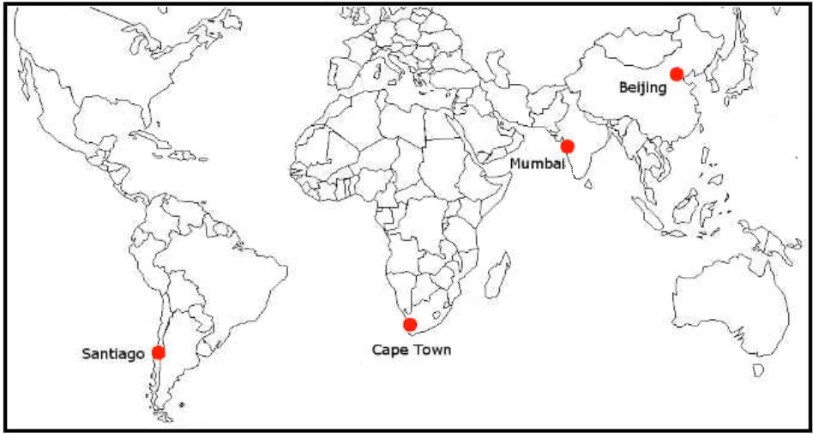
Refer to the exhibit. ACME Mining has four data centers in Santiago, Cape Town, Mumbai, and Beijing, full-mesh connected via a 400 Mb/s EVP-LAN. They want to deploy a new mission-critical application with these requirements:
* cluster heartbeat 2 MB/s continuous (250 KB/s)
* cluster heartbeat one-way maximum latency 100 ms
These are the current ping tests results between the four data centers:

Which hosting data center pair can host the new application?


